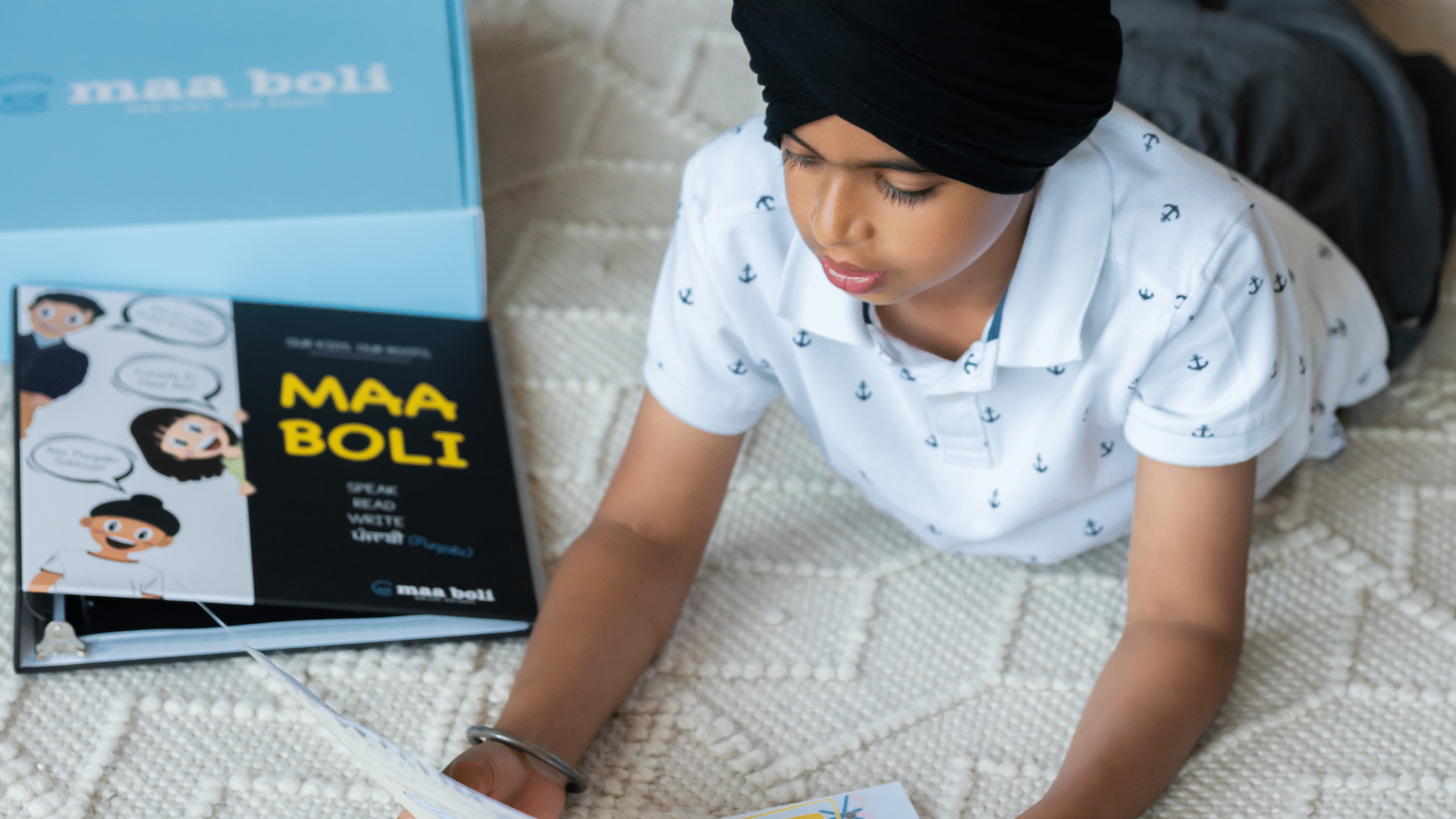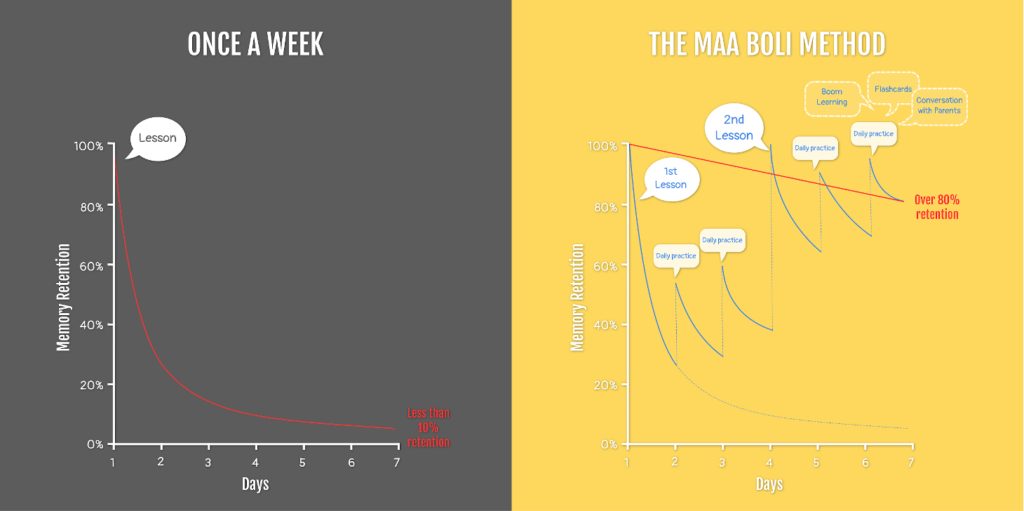
The Science of Spaced Repetition
Theoretically, we can learn anything. We have all information in the world at our fingertips and we need only Google to find the answers to all our questions. Yet despite all this access, why don’t we know everything? Why do we Google the same thing over and over again?
The culprit: human memory.
We all know that we forget things.
Things slip our minds.
They balance on the tips of our tongues.
They go in from one ear and out the other.
They get lost in our trains of thought.
We have so many ways of expressing our inability to retain information.
Perhaps it’s because we forget more than we remember and we forget pretty quickly too.
Cognitive psychology research establishes that we forget 56% of the information stored in our memories after only an hour.
After a day, we lose 66% of the information.
After a week, more than 75% of the information disappears, just like ✨magic✨
How Maa Boli cracks the code?
At Maa Boli, we designed our programs with the nature of human forgetfulness and the science of human memory in mind.
Taking lessons from the research on memory and learning, we recommend 2 interactive lessons every week.
Based on the theory of Spaced Repetition, we space out language practice throughout the week, which helps students learn and remember better.

This schedule allows students to encounter the same information again and again over their week, instead of lumping it together into one small compartment of their life.
Our program also schedules at least 10 minutes of language learning practice every single day.
With our practice games, flashcards, and parent conversation starters, our young learners use what they learn as they go about their lives and they strengthen their retention through graduated practice.
Ultimately, language learning becomes a habit and the language becomes a part of them.
LEARN MORE ABOUT THE SCIENCE BEHIND OUR METHODOLOGY
The Forgetting Curve
German psychologist Herman Ebbinghaus was the first to study memory through the experimental method. He performed a series of tests to determine the relationship between information retention and time. He found that we forget things exponentially over time. The greatest loss of information happens at the start and if we don’t make an effort to retain it, most of the information is lost eventually.

The forgetting curve is the bane of every language learner’s existence. Each language is a collection of complex phonetic, phonological, morphological, syntactical, semantical, and pragmatic information. That’s a lot to get through and it’s frustrating when you can’t even retain the information you already learned.
The Spacing Effect
Lucky for us, there’s another version of the forgetting curve. This one shows what happens when you review the information after some time or what Ebbinghaus called the spacing effect.

As you actively review the information over regular, spaced intervals, you re-activate the memory and deepen the neural connections. With enough practice and repetition, you improve those neural pathways and strengthen the memory. In this case, forgetting a little bit actually helps because your brain tries harder to remember. As it works out, it gets stronger.

Repetition is key!
This method of reinforcing a memory by training at regular intervals is called the distributed practice effect, more commonly known as spaced repetition.
The forgetting curve teaches us how not to learn. Taking in large loads of information at one time isn’t effective. Neither is memorizing things over a short period of time.
Instead, the practice should be dispersed over time and information should be repeated. Frequency and constancy are key.